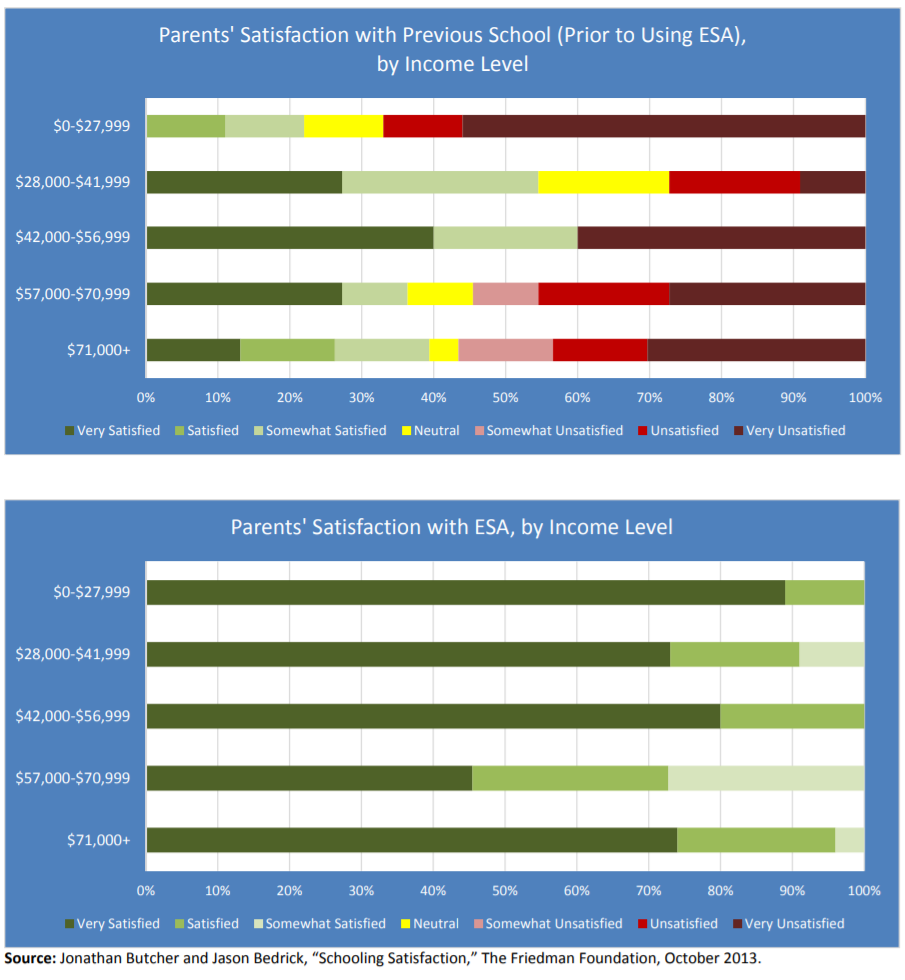Education Savings Accounts
In virtually every aspect of life, Nevadans demand choice. They expect a choice of grocers, retailers, food service providers, health care specialists and automobile manufacturers. Choice begets accountability because producers of these goods quickly learn that, to attract and retain customers, they must offer a product consumers are willing to pay for.
In 2015, lawmakers took a bold step toward giving Nevadans similar choices regarding their children’s education by passing the nation’s first near‐universal program of Education Savings Accounts (ESAs). An ESA is a private account into which the state deposits moneys that parents can use for certain approved purchases. Approved purchases include tuition at a private or online school, transportation, textbooks and study materials and even private tutoring. The high degree of flexibility associated with an ESA means that each child can receive a course of study customized specifically for his or her individual needs.
To become eligible for an ESA, a student must have attended public school for at least 100 uninterrupted days immediately prior to applying. Upon meeting this criterion, the State Treasurer must create an ESA on the child’s behalf and deposit an amount equal to 100 percent of the state‐guaranteed Basic Support per Pupil for students in households earning less than 185 percent of the Federal Poverty Level and. Students from households earning more than this amount, will receive 90 percent of Basic Support per Pupil.
Key Points
Many Nevada private schools offer tuition within the range of an ESA. NPRI has compiled a listing of all private schools in Nevada along with tuition rates at NevadaESA.com. Dozens of educational options easily affordable with an ESA already exist and more will be formed in response to the new demand that the ESA program will create.
ESAs give children from poor families the same opportunities previously available only to children from wealthy families. Educational choice has always been available to those who have money and can afford private‐school tuition on their own. It has traditionally been less affluent children who were forced to remain in underperforming public schools, perpetuating a cycle of poverty in some communities. ESAs can end this tragic cycle by offering an equality of opportunity.
Private schools yield better results. Nationwide, students in private schools score almost two grade levels higher on standardized math and reading tests than do their government‐school peers. Also, graduation rates and the likelihood of attending college are far higher among private school students.
Every child can learn. It’s not just the wealthy elite who perform well in private schools. Low‐income beneficiaries of school choice programs in Washington, D.C., Milwaukee, Florida and elsewhere have shown significant improvement after participating in choice programs for only a few years.
Choice improves government schools. Despite opponents’ claims that choice programs “cream” the best students away from government‐run schools, empirical evidence shows that the presence of alternatives leads to higher test scores and graduation rates even for those who choose to remain in a government school. Because students with ESAs receive lower funding, the per‐pupil funding level for those who choose to remain in public schools also rises.
Recommendations
Maintain Education Savings Accounts. Never has one legislative accomplishment offered so much hope for a state’s rising generation than creation of Nevada’s Education Savings Accounts. However, unions and other special interests who want to preserve their traditional entitlement to tax dollars designated for education have filed lawsuits attempting to stop ESAs and prevent children from getting access to greater opportunities. These suits make spurious arguments about the secular use of public funds even though all ESA funds, by definition, are private. Regardless, lawmakers should do all they can to protect Nevada’s children from these predatory special interests.
The nation’s first ESA program was established in Arizona in 2011. Two years later, a survey of participants measured parents’ satisfaction with the ESA program versus their satisfaction with the school their child had previously been assigned to. The results are reproduced here. Two trends are notable:
1. Parents from all income classes were more satisfied with the ESA than with the public school their children had been assigned to previously.
2. The improvement in parental satisfaction was most pronounced among families in lower income classes.

Download Solutions 2017: A Sourcebook for Nevada Policymakers to learn more about NPRI’s other solutions to public policy issues facing Nevada.